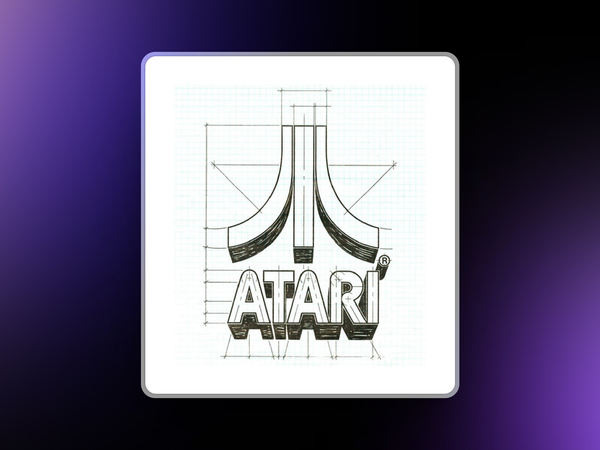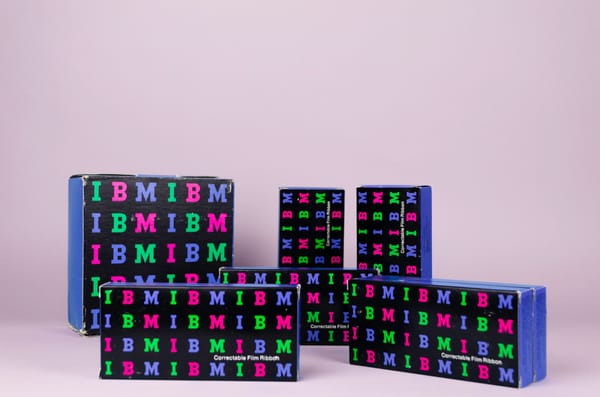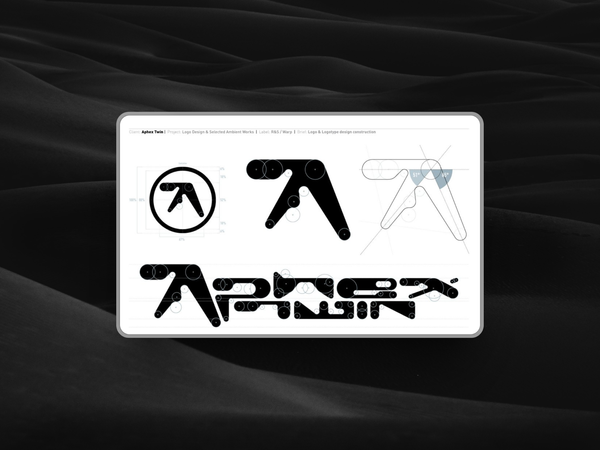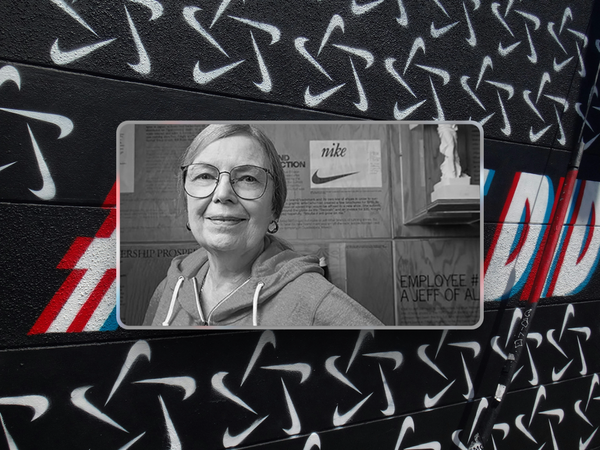Interview with Space Lion Studios: Bringing Axyz to Life on Steam
Axyz twists gravity with vaporwave vibes—how will you navigate it?
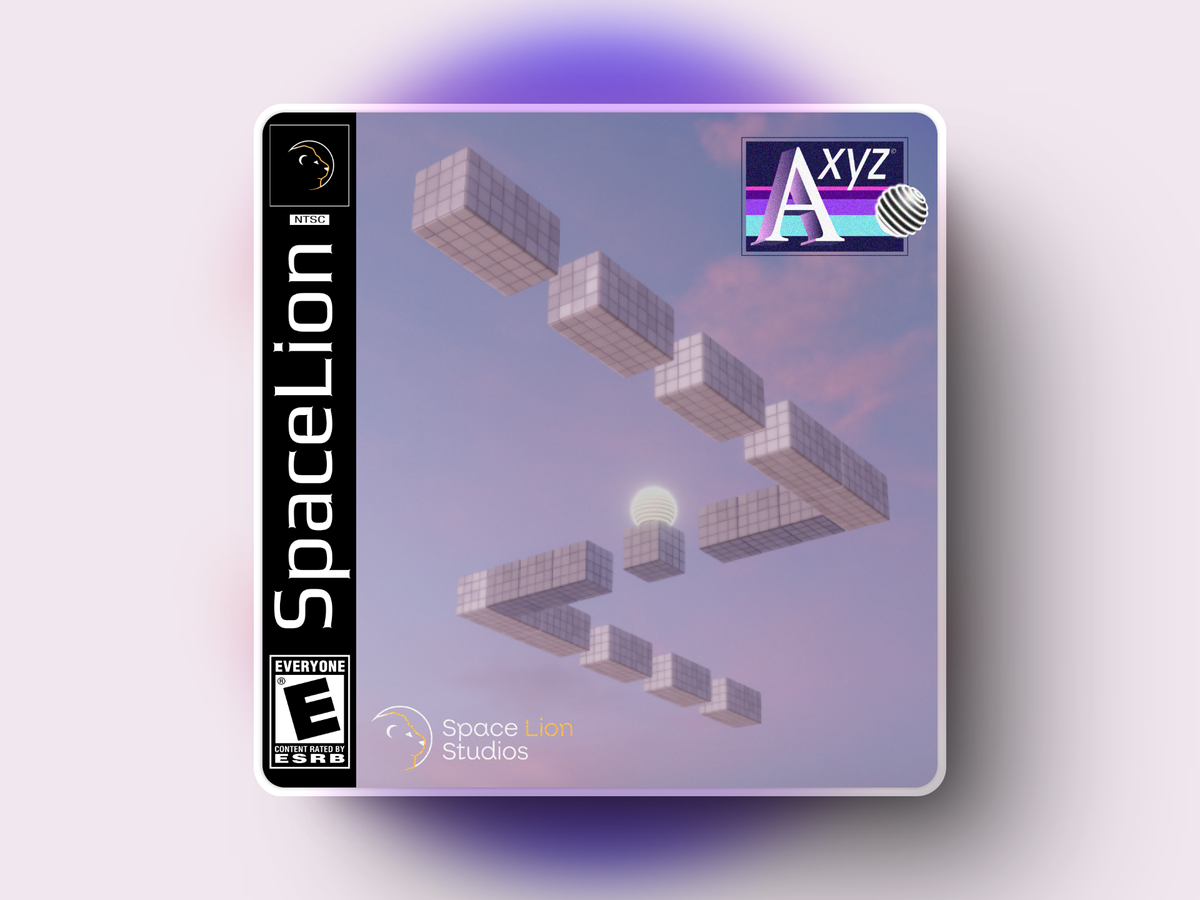
Indie games have a unique way of capturing nostalgia while pushing creative boundaries, and Axyz is no exception.
Developed by a two-person studio, this gravity-defying puzzle platformer takes inspiration from classics like Kula World while introducing fresh mechanics and a vaporwave aesthetic.
We spoke to Mark, one of the developers behind Axyz, about the game's development, challenges, and what indie devs should know before diving into their first project.
What inspired you to create Axyz?
I’ve always had a soft spot for Kula World, this weird little puzzle game that stuck in my head from childhood, alongside Intelligent Qube and Devil Dice. When we were deciding on our debut game, Axyz made sense—it was something we could realistically complete in under two years, working around our limitations while focusing on game feel and level design.
Its modular nature meant we could prototype levels quickly, almost like having our own Super Mario Maker. If I had an idea, I could test it immediately, which made iteration a dream.
Can you walk us through the development process? What challenges did you face?
The biggest challenge was handling the concept of "up." Since gravity shifts dynamically, we couldn’t rely on traditional physics engines, which assume a fixed gravitational direction. We had to handle physics calculations manually and precompute all possible movements to avoid performance issues.
There were also unexpected hurdles. For example, the game has an audio visualizer that reacts to music. When we added FMOD late in development, it tanked the frame rate due to how we initially set things up. If we'd known from the start, we could've avoided that mess.
But that's part of indie game development—solving problems you never saw coming and figuring out how to keep moving forward.
How did you approach designing the gravity-switching mechanics?
I wanted Axyz to have a mechanical hook that set it apart. I thought of VVVVVV and its gravity-switching mechanic and wondered how that could change the flow of gameplay. That one idea opened up a ton of possibilities, though a lot of the real challenges didn't surface until we were deep into development.
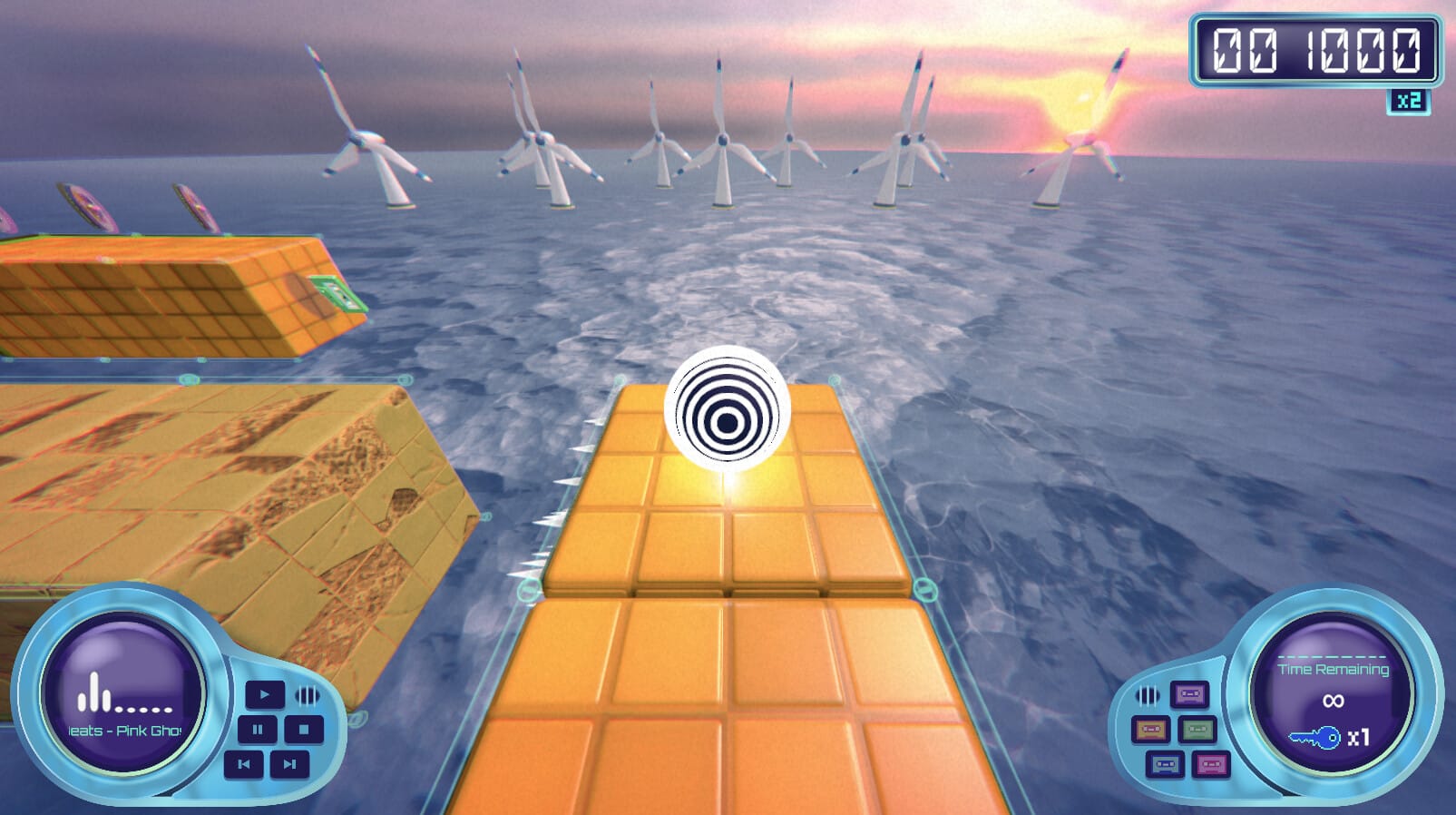
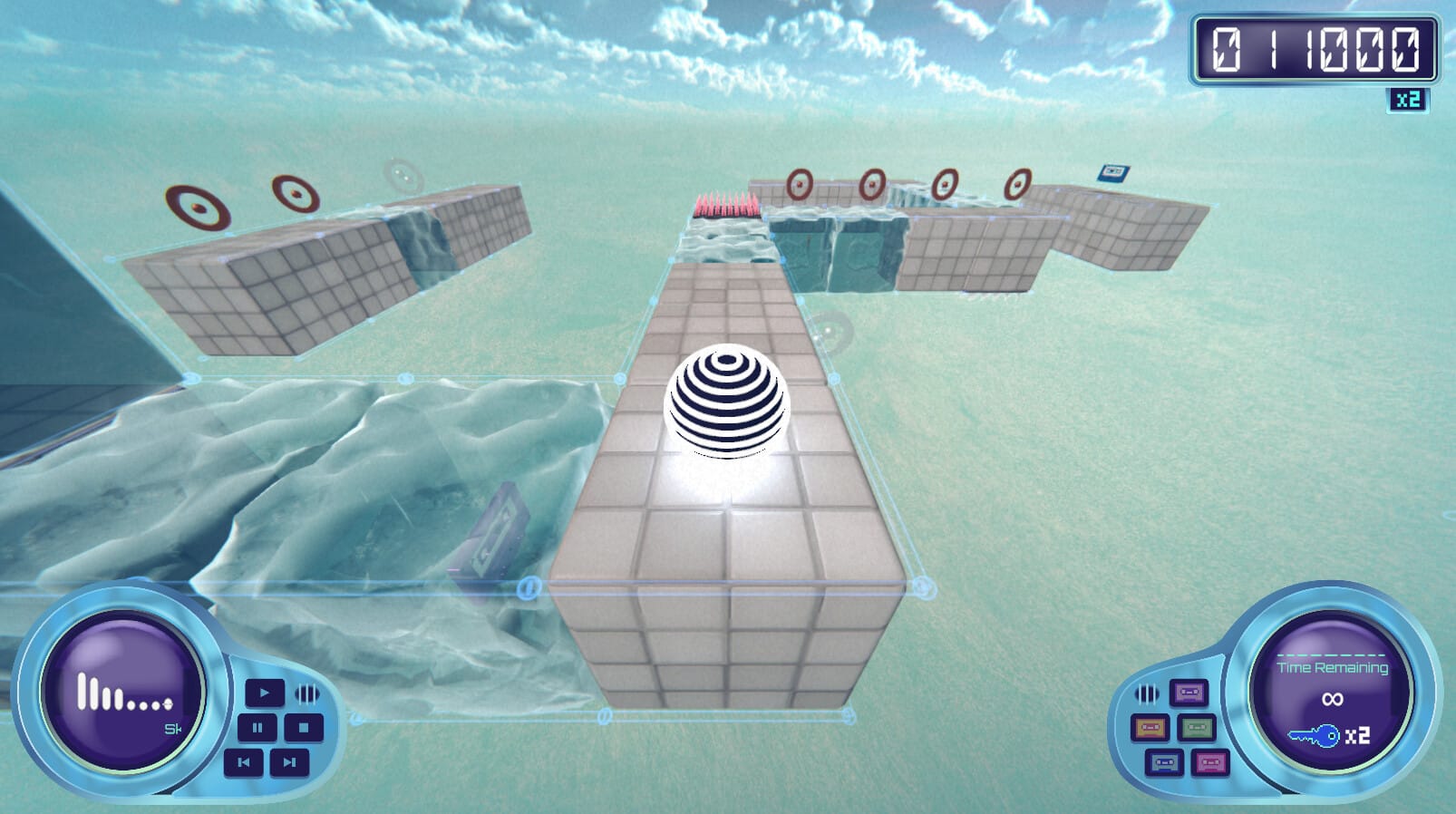
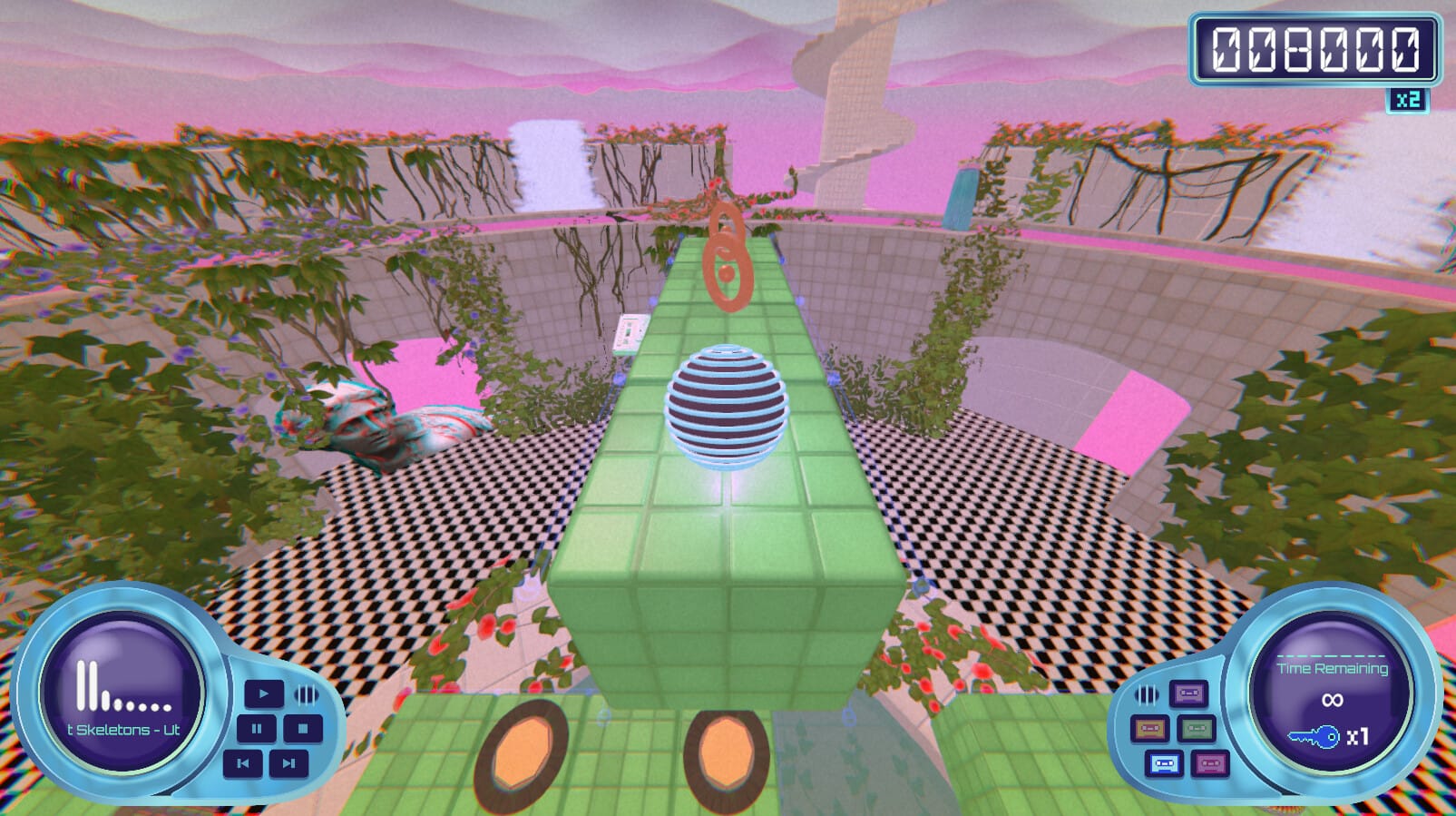
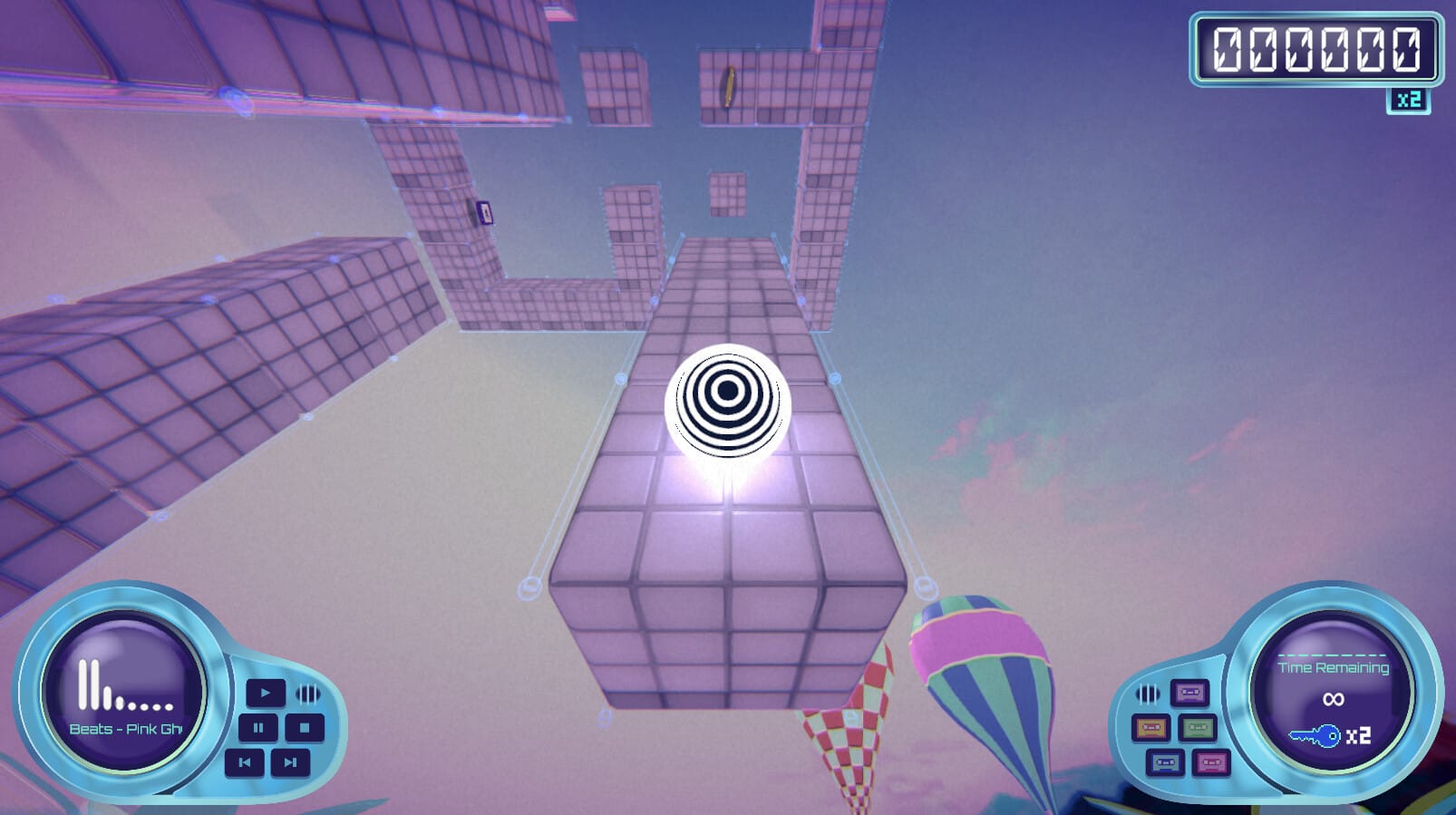
The game has a strong vaporwave aesthetic—why did you choose this style?
A good friend of mine, Jamie D, is developing Vaporwave Pinball (go wishlist it!), and that aesthetic immediately felt like a perfect fit for Axyz.
Kula World already had a low-key vaporwave vibe—esoteric environments that look like they came straight from Bryce3D. I leaned into that, blending elements from Windows 98, Y2K graphics, 80s mall hyper-capitalism, and anything else that fit.
How did you balance nostalgia with modern game design to make Axyz feel fresh?
Kula World is a great game, but it feels stiff, partly because of its digital movement designed around the D-pad. We knew from the start we wanted smoother controls and a modernized progression system.
Playtesting helped massively. At one of our first showcases, someone asked, "Why doesn’t pressing down do a 180 instead of tapping left/right twice?"—and it was such an obvious improvement. We also spent ages debating the timer. Originally, we had a countdown like Kula World, but we found that stressed players out. Instead, we let the timer count up, keeping time-based challenges without forcing restarts.
What has been the most rewarding part of developing the game?
Seeing people sit down, play the game at events, and wishlist it in front of you. I’ve done about 12 events in a year, and while there are times I sit there for hours wondering what I’m doing, then someone will smash through the demo and chat with me for 30 minutes about the game. Those moments make it all worth it.
Hitting 1,000 wishlists is insane. Sure, you see other devs hit 100k in a week, but we’ve worked hard for every wishlist, and I’m grateful for everyone who’s supported us. Getting a Most Anticipated nomination at the Debug Indie Game Awards was a nice bonus too.
How are you handling marketing and community engagement for Axyz?
A mix of winging it and luck. We were part of the Haunted PS1 Demo Disc: Flipside Frights collection, which gave us great exposure. We’ve seen solid traction from Reddit posts and Bluesky, while Discord has been great for playtesting feedback.
We looked into marketing agencies, but even small campaigns cost way more than we could justify. Indie marketing is mostly about persistence—screaming into the void until something sticks.
What tools and game engines did you use to develop the game?
Unity and Blender. We briefly considered switching engines when Unity pulled its nonsense, but we didn't have the time or money to move. I also played around with Bryce3D for environmental assets, but the UI was too clunky. Maybe I’ll revisit it post-launch.
Do you plan to add any unique features or content post-launch?
It depends on how the launch goes. We’ve left a lot of ideas on the cutting room floor, but if there's an audience, we’d love to revisit them.
At the very least, we'll release a post-launch patch with bug fixes and one new mode we couldn’t finish in time. Beyond that, we're looking into a Switch port.
What advice would you give to indie developers working on their first game?
Scope properly. Start small. That massive open-world RPG you're dreaming of? Put it on hold. Your first game should be something manageable, so you can learn UI implementation, Steamworks, marketing, localization, and everything else that comes with game dev.
Even knowing this, we still underestimated things. We had ideas that seemed feasible but would’ve added 6-12 months of development with minimal impact on the experience.
Also—network. Go to game dev events. Showcase your game. The indie scene in Ireland is spread across Dublin, Cork, Galway, and Belfast, but it still feels local. The connections we made have been invaluable.
Axyz is available now as a free demo on Steam. Check it out and wishlist the game here!


